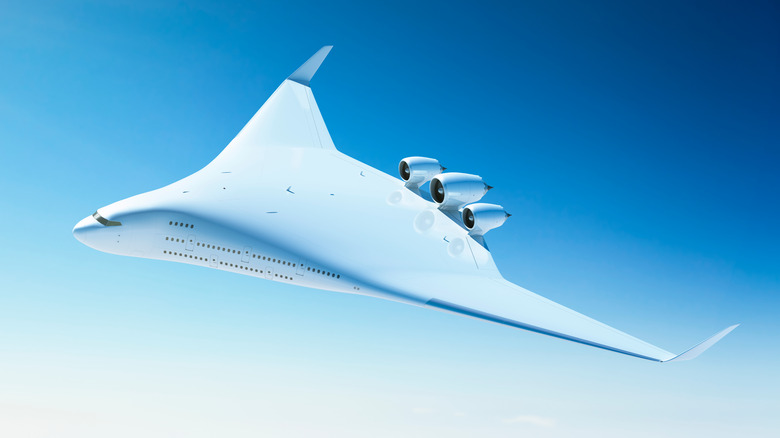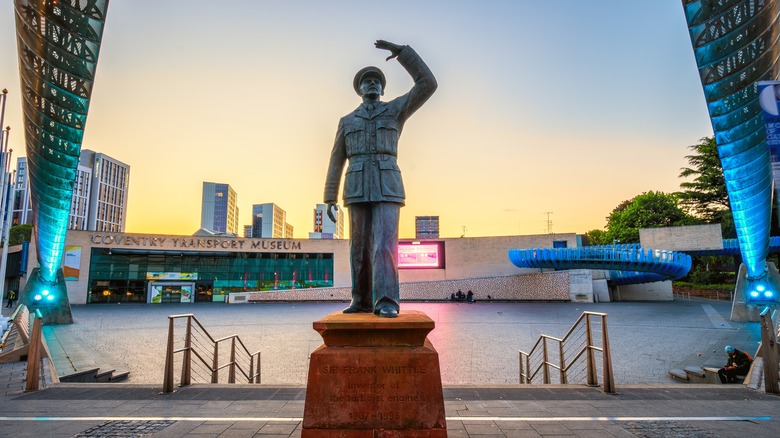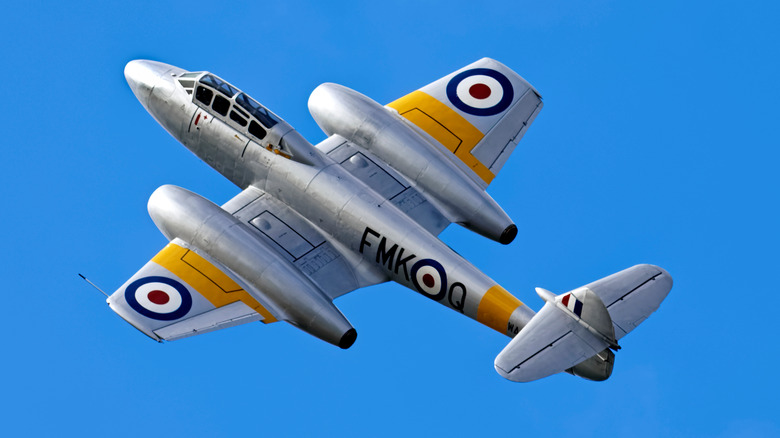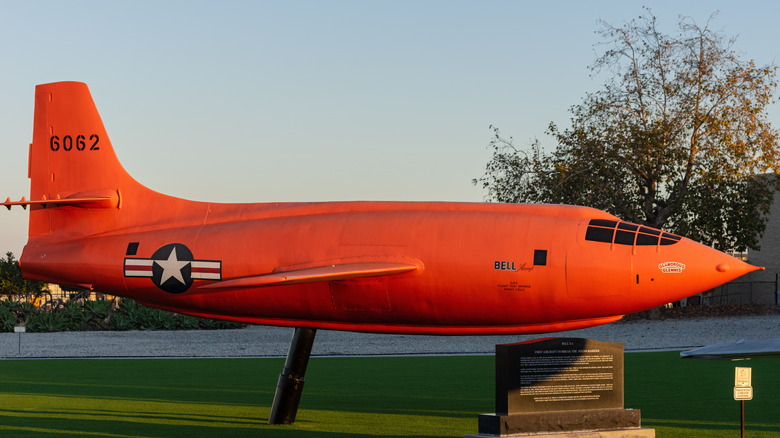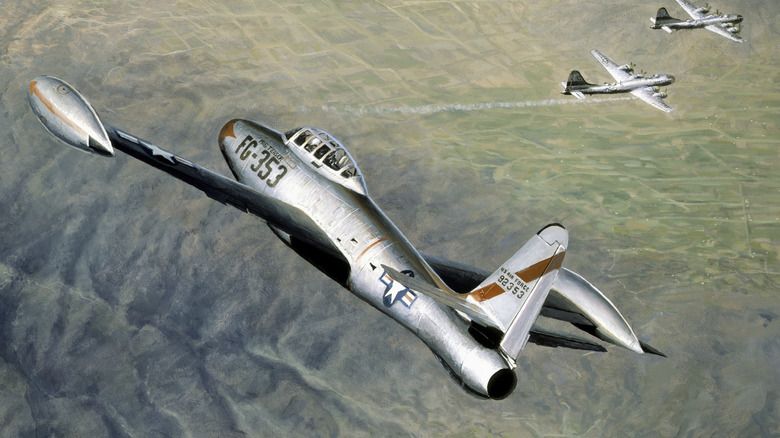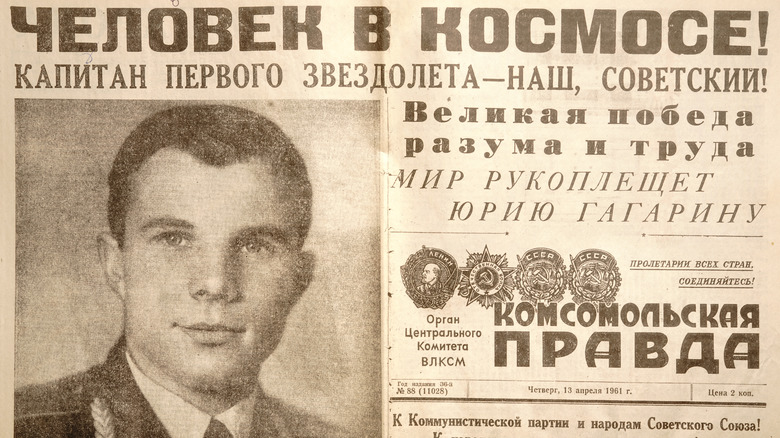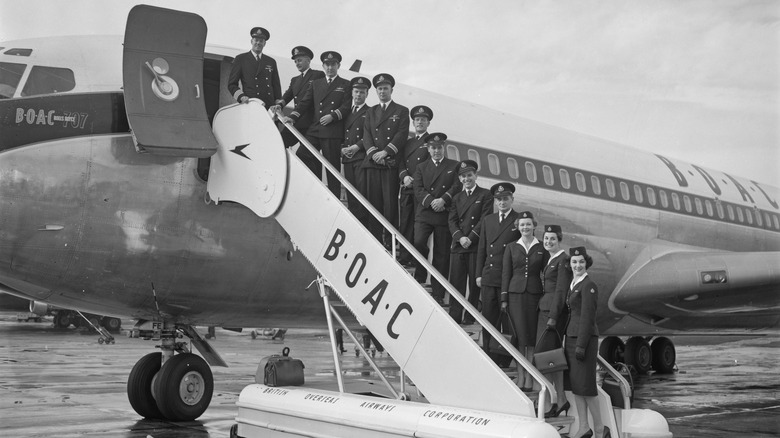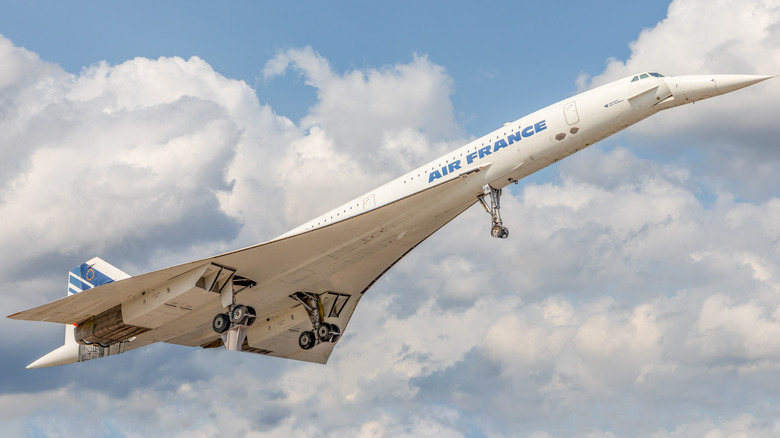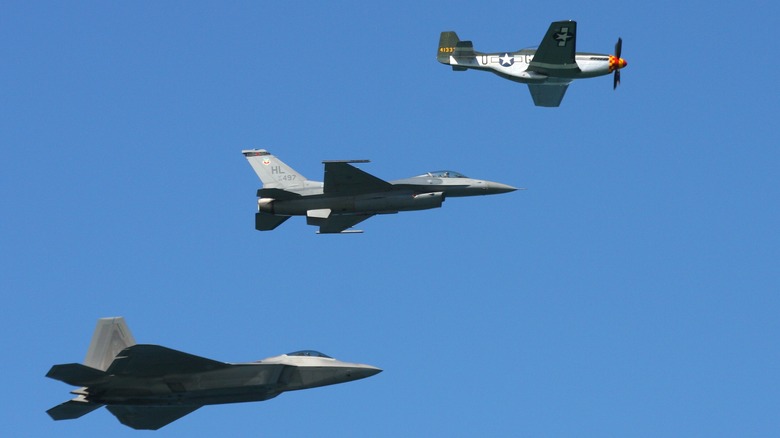The History Of The Jet Age: From 1939 To 2024
The last 125 years have been one of human history's most technologically progressive periods. The Industrial Revolution created the capacity for precise mass production, kick-starting a dramatic shift in how humans understand and interact with their environment. Technological innovation has built upon itself. Pioneers from previous generations have made discoveries that inspire and inform the future, leaving a legacy of achievement. Isaac Newton famously said, "If I have seen further, it is by standing on the shoulders of giants."
With the arguable exception of computing, no technology has defined the period in which we live as much as the advent and exponential growth of aviation. The gap between humankind departing their earthly tether under the power of an internal combustion engine — itself a recent invention — in 1903 and the first men on the moon was a mere 66 years. And only 58 years spanned the gap between the first flight and Yuri Gagarin's entry into orbit on behalf of mankind.
When it comes to the Jet Age, we all benefit from standing on the shoulders of the pioneers and scientists who came before us, and boy, the view is nice. Voyages that once took months of mortal privation and cost thousands of lives now take mere hours. The residents of developed nations can have breakfast at home and dinner on the other side of the planet. Fifth-generation jet fighters equipped with technology previously undreamed roam the skies. Commercial space travel is within spitting distance. And it has all happened within the last 85 years.
The first jet-powered aircraft
The desperate combat of the Second World War moved entire nations to pour incredible resources into developing weapons that might give them an edge in combat. This concentration of effort is the cradle of the Jet Age. Late-war jet aircraft like the Gloster Meteor and Messerschmidt ME-262 have claims to fame as the first operational jet fighters in history, but these aircraft did not spring into the air from nothing. Notably, Hans von Ohain, a doctor of physics and allied mechanics from the University of Gottingen in Germany, made a significant breakthrough in the late 1930s. Employed at aircraft manufacturer Heinkel, he stood on the shoulders of British inventor Frank Whittle, who patented the first turbojet engine in 1930. However, von Ohain took the bold step of attaching a working turbojet to an aircraft and putting it into flight, marking a pivotal moment in aviation history and the dawn of the Jet Age.
On August 27, 1939, the HE-178 S.3B was the first aircraft to fly under a turbojet's power. While the flight only lasted six minutes, pilot Erich Warsitz reached a speed of about 371 miles per hour (598 kilometers per hour). It was proof of concept for a new type of aviation that would far outstrip the capabilities of propeller-driven aircraft.
The first fighter jets
Both sides of World War II's combatants immediately saw the potential of the jet aircraft. Britain's counterpart to Hans Von Ohain, former Royal Air Force (RAF) pilot Frank Whittle, had patented his jet engine back in 1930. But it was only in 1941 that the Gloster E.28/39 airframe equipped with a Whittle W.1x turbojet took to the sky.
It was still years — three, to be exact — before Britain or Germany fielded an operational jet aircraft. The world's first combat jet fighter, the Messerschmidt ME-262 (or the Schwalbe), was the only jet fighter to see combat operations during the Second World War in 1944, and it had enormous potential. Powered by a pair of Junkers Jumo 004 B engines, the 262 had a top speed of 540 miles per hour (869 kilometers per hour), massively outstripping even the American P-51 Mustang piston fighter. Fortunately, the incredible performance of the first fighter jet was too little too late for Nazi Germany. By the time it took to the sky, Allied air cover was so pervasive, and Germany's war-fighting capability so diminished that it did not affect the ultimate outcome. Only about 20% of the 1,400 produced ever saw combat.
On the Allied side of the equation, the less-famous Gloster Meteor saw limited combat duty as a ground attack and air-defense platform, shooting down V-1 missiles (another product of German jet research). However, the Meteor went on to have a sixteen-year career in the RAF, helping the military transition from propeller-driven fighters to jet aircraft.
Supersonic flight
The Soviet Union and the United States worked together during the war, but it didn't last. With the ink barely dry on the Paris Peace Treaties, the erstwhile allies scrambled for research and scientists that would aid them in attaining technological mastery over their rival as the sole superpower. Infamously, Operation Paperclip scooped up war criminals, as well as engineers like Wernher von Braun and Hans von Ohain for their jet and rocket programs (Braun is also viewed by some as a war criminal who escaped punishment for his crimes). The goal was higher and faster, and within two years of the war's end, the United States went supersonic.
In the late 1940s, the U.S. Army Air Forces inaugurated a secret program to break the "sonic wall" or achieve supersonic flight. Once thought impossible, breaking the sound barrier was not a feat for the faint of heart. The Bell X-1, an aircraft with swept-back wings and a conical fuselage housing a rocket engine that fed on liquid oxygen and ethyl alcohol, was ready to soar into history on October 14, 1947.
The program tapped United States Air Force Captain Chuck Yeager for the task. In an orange aircraft nicknamed "Glamorous Glennis" after his wife, he launched from the bomb bay of a B-29 bomber and ignited the rocket. During the 12-minute flight, Yeager broached the 662 miles per hour (1,065 kilometers per hour) sound barrier, achieving a speed of 700 miles per hour (1,126 kilometers per hour).
Mig Alley and the first jet combat
Technology continued to advance into the 1950s, and the first jet-on-jet aerial dogfight occurred in the skies over Korea. Though the Cold War is referred to as "cold" because the United States and USSR never declared war on each other, their forces faced off many times in the latter half of the 20th century.
The Korean peninsula became the first battlefield for jet fighter aerial combat. The Soviet Union and the United States kept up fighter development in the post-war arena, and a slice of airspace over northeastern Korea became a deadly proving ground. American pilots nicknamed it "MiG Alley" for the profusion of Soviet aircraft flying in a region of China just across the Yahu River. MiG-15s, F-80 Shooting Stars, Gloster Meteors, F-84 Thunderjets, F-86 Sabres, and others would meet to battle-test the state of jet aviation under combat conditions.
On November 8, 1950, a flight of F-80 Shooting Stars from America's Fifty-First Fighter Wing was performing a strafing run on an airfield when a flight of Soviet MiG-15s appeared. Two dropped to intercept the Americans, and what became known as one of the first jet-powered aerial dogfight was on! American pilot Russell Brown claimed one MiG-15 downed. Though the Soviets denied the claim, one thing was clear: The age of military jet aviation was here to stay.
The Space Race
The skies over Korea were not the only place the United States and the USSR faced off. With each superpower eager to prove the overall superiority of their own political philosophy, universities and laboratories became the operations rooms, and outer space was the battlefield. Nazi Germany used their jet engine research for fighter plans, but they also used them for the first long-range ballistic missile, the V-2 rocket. But what if someone slapped a pilot in a rocket and pointed it up? It's a gross oversimplification, but that's precisely what happened.
On April 12, 1961, Soviet cosmonaut Yuri Gagarin became the first human being to leave the planet when he orbited Earth on a 108-minute flight. Not to be outdone, a mere six weeks later President John F. Kennedy announced that Americans would not only be going to space but to the moon. The race to the moon and its subsequent landings have been covered ad nauseam, but what gains less attention is the technologies that the Space Race introduced to the world.
Years ago, the word "satellites" referred to the heavenly bodies observed by the likes of Galileo and Copernicus. Today, the word refers to man-made marvels of technology that connect and document the world. They are used for everything from spying to cartography, giving humans unparalleled access to each other and data about their home planet.
The Jet Set
Like radar, the microwave, the computer, and synthetic rubber, jet aircraft made their way from military to civilian use. Around the same time fighter pilots battled over MiG Alley, the first commercial jetliner entered service with the British Overseas Airways Corporation (BOAC). On May 2, 1952, the de Havilland Comet made its maiden commercial voyage from London to Johannesburg. The first American routes began in the late 1950s when they ran Boeing 707s and Douglas DC-8s.
Initially, jetting across the country or the Atlantic was not only fashionable but prohibitively expensive. The celebrity elite — including Audrey Hepburn, Frank Sinatra, Elizabeth Taylor, Princess Margaret, Richard Burton, and Truman Capote — made a public habit of gallivanting from one exotic locale to another, raising the cache of jet travel with their glamour and decadence. Then, advancing technology, economies of scale, and government deregulation of the jet industry during the 1970s changed it forever.
The government had initially protected the sector by keeping fares artificially high and restricting routes. But in 1978, Congress abolished the central airline regulating agency, the Civil Aeronautics Board, and declared airlines could set their fares and routes. New airlines formed, and competition drove down ticket prices. The American middle class could now enjoy the Jet Age in a way previously reserved for the wealthy.
The Concorde
A collaboration between the United Kingdom and France took place around the same time as the rise of the jet set. British Aerospace and French Aérospatiale developed an airframe for a supersonic aircraft. At the same time, Rolls-Royce and Société Nationale d'Étude et de Construction de Moteurs d'Aviation (SNECMA) created engines with afterburners to push the delta-wing aircraft at speeds up to 1,354 miles per hour (2,179 kilometers per hour).
The distinctive Concorde supersonic passenger airliner made its double debut on January 21, 1976. Air France flew its aircraft from Paris to Rio de Janeiro, and British Airways flew its model from London to Bahrain. Supersonic travel, once thought impossible and the sole purview of courageous men in experimental aircraft, became accessible to civilians. Those with enough money could travel between London and New York City in less than three hours.
The development of the Concorde was so expensive that neither France nor the United Kingdom could ever draw a profit from its regular service, which ended catastrophically in 2003. A devastating crash killed the Concorde and brought the age of supersonic passenger aviation to an end, at least for now.
Fifth-generation fighters
The military continues to lead the development of cutting-edge jet aircraft technology. This makes sense when you consider that the U.S. Air Force began developing its fifth-generation air superiority fighter, the F-22, all the way back in 1990, a mere four years after the public drooled over the F-14 Tomcat in Top Gun. The F-117 stealth fighter made its maiden voyage in 1977 despite not being publicly acknowledged until 1990.
Revolutionarily updated stealth technology and advances in supercruise could impact the commercial sphere with safer and faster airliner flights. The return of supersonic commercial flight is a real possibility, with companies like Boom Supersonic using 20 years of improved technology since the fall of the Concorde to build a faster and cleaner jet capable of supersonic flight.
With the F-22, F-35, and Russian and Chinese fifth-generation fighters — the SU-57 and J-20, respectively — operational for the past decade or longer, it's titillating to imagine what new tech is developing in the corridors and laboratories of Lockeed-Martin and other military suppliers.
The future of the jet
The technological history of the 20th century continues to repeat itself. Money poured into military development pays dividends in the public sphere. Technology becomes less expensive and more accessible, and competition fosters innovation. Feats and technologies once thought to be beyond the realm of possibility, like breaking the sound barrier or landing humans on the moon, have time and again been surpassed by engineers and scientists standing on the shoulders of giants.
The Jet Age may launch the masses right off the planet, like Yuri Gargarin in 1961. Private companies are developing space tourism and low-orbital commercial travel in conjunction with government space agencies. SpaceX, Blue Origin, Virgin Galactic, and others are working on making space travel a realistic possibility in the not-too-distant future. Like the middle class of the 1960s watching the jet-set, we see space tourism as the arena of the ultra-rich. But it would not be too outrageous to suppose that if the technological arc of military development ultimately pays dividends in the public arena, the average human may have access to the heavens in ways previous generations could only dream.
